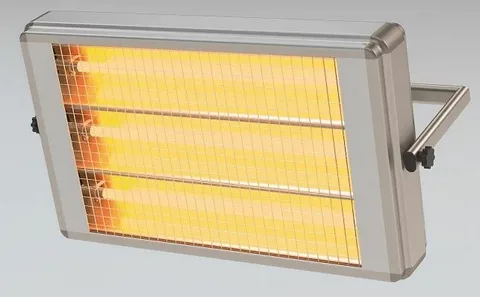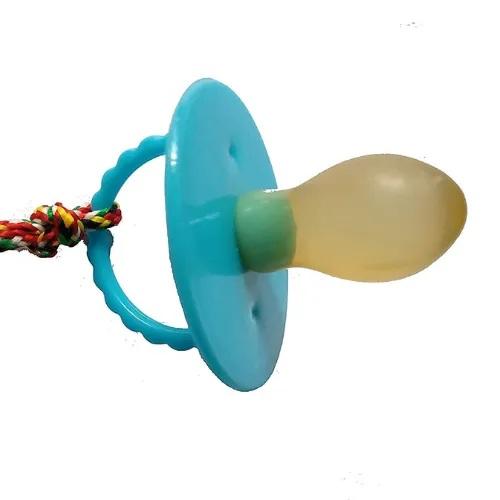Energy Efficiency: Far Infrared Heater Save You Money

As energy costs continue to rise, finding innovative ways to stay warm without breaking the bank is more important than ever. Enter the far infrared heater – a game-changer in home heating solutions that keeps you cozy and has your wallet’s best interests at heart. Imagine stepping into a perfectly heated room, all while knowing you're making an eco-friendly choice that slashes those pesky monthly utility bills. Curious about how this innovative technology works its magic? Let’s explore the financial benefits of switching to Infrared Heaters and discover why they might be the perfect fit for your home!
How Infrared Heaters Reduce Your Heating Bills
Infrared Heaters offer an energy-efficient way to warm your home, helping you reduce heating costs without sacrificing comfort. Here’s how they make a difference in your energy bills:
Direct, Efficient Heating
Unlike traditional heaters that warm the air, Infrared Heaters heat objects and people directly. This targeted approach reduces heat loss and uses less energy to maintain a comfortable temperature.
Faster Warm-Up Times
Infrared Heaters provide almost instant warmth, eliminating the need to run them for long periods. This quick heat delivery lowers overall energy consumption.
Zonal Heating Capabilities
These heaters allow for zonal heating, meaning you can warm specific rooms or areas rather than the entire house. This focused heating helps reduce unnecessary energy use.
Lower Thermostat Settings
Since infrared heat feels warmer at lower temperatures, you can lower your thermostat while still feeling cozy, leading to further energy savings.
Minimal Heat Loss
Infrared Heaters are less affected by drafts or open doors because they don’t rely on air heating. This makes them ideal for poorly insulated or large spaces, reducing wasted energy.
Comparing Infrared Heaters to Traditional Heating Systems
Infrared Heaters and traditional heating systems differ significantly in generating warmth. While conventional systems rely on air circulation, which can take time to heat a room, Infrared Heaters emit radiant heat directly to objects and people. This method creates immediate comfort without the need to warm up the entire space.
Traditional heating often relies on fossil fuels or electricity that heats the air, leading to energy loss through drafts and poor insulation. In contrast, far infrared technology minimizes this waste by targeting specific areas.
Additionally, Infrared Heaters tend to lower maintenance costs since they lack complex ductwork or mechanical components and are prone to wear over time. This simplicity enhances reliability and contributes to long-term savings for homeowners seeking efficient solutions.
Lower Energy Consumption with Far Infrared Heating Technology
Far infrared heating technology stands out for its impressive energy efficiency. Unlike traditional heaters, which warm the air in a room, Infrared Heaters directly heat objects and people within their range. This targeted approach means less energy is wasted on keeping the air warm.
These heaters consume significantly less electricity by operating at lower temperatures while still providing comfortable warmth. You can maintain cozy spaces without cranking up your energy bills. The result? A more sustainable choice for your home or office.
Moreover, many far infrared models have advanced features like programmable thermostats and timers. These allow you to customize heating schedules according to your needs, optimizing energy use and reducing costs effectively throughout the day.
Why Far Infrared Heater Are Cheaper to Run
Far Infrared Heater operate more efficiently than traditional heating systems, which can significantly save energy bills. They directly convert electrical energy into heat, warming objects and people rather than the air around them. This means you feel warm quickly without needing to crank up the thermostat.
Another reason these heaters are cheaper to run is their lower wattage requirements. Many far infrared models use fewer watts while delivering adequate warmth, reducing electricity consumption.
Additionally, they provide targeted heating options that allow you to focus warmth in specific areas of your home. This zonal heating approach eliminates waste from unnecessary heating of unoccupied spaces, ensuring that you're only paying for heat where and when it’s needed most.
Direct Heating: The Secret to Infrared Energy Efficiency
Direct heating is a game-changer in energy efficiency; unlike traditional systems that heat the air, Infrared Heaters warm objects and people directly. This targeted approach means you feel immediate warmth without waiting for the entire room to heat up.
The benefits are clear: less energy waste translates into lower bills. When you turn on a Infrared Heater, it radiates warmth to its surroundings. You aren’t just heating space; you're creating comfort right where it matters.
Moreover, this method reduces reliance on high thermostat settings. With direct heating, you don’t need to crank up your system for comfort; instead, enjoy cozy temperatures while using significantly less energy. It’s an efficient solution that makes sense both economically and environmentally.
Cutting Monthly Utility Costs with Infrared Heater
Switching to a Infrared Heater can dramatically reduce your monthly utility costs. These heaters work differently from traditional systems, focusing on warming objects and people directly rather than heating the air. This means you feel cozy at lower temperature settings, which saves energy.
With their efficient design, Infrared Heaters consume less power while providing consistent warmth. Unlike conventional systems that often cycle on and off, these units maintain an even temperature without overworking themselves or increasing your bill.
By targeting specific areas of your home, you enjoy comfort where you need it most without wasting energy in unused spaces. The result is not just savings but also a more pleasant living environment all winter long. Embracing this technology can lead to noticeable reductions in those dreaded utility bills each month.
How Infrared Heaters Minimize Heat Loss
Infrared Heaters work differently from traditional heating systems. They use advanced technology to heat objects and people in a room directly rather than just warming the air. This approach significantly reduces heat loss, as there's less reliance on circulating hot air that can easily escape through drafts or poorly insulated areas.
Unlike conventional heaters that push warm air upwards, far infrared energy penetrates materials like walls and furniture. This creates a more stable temperature environment while minimizing the need for constant re-heating. As a result, rooms feel warmer without excessive energy consumption.
By focusing on direct heating, these devices maintain warmth even when doors are opened or windows are slightly ajar. Reduced heat loss translates into lower energy bills and increased comfort in your living space throughout colder months.
Zonal Heating with Far Infrared: Save Money Effectively
Zonal heating with a Infrared Heater is an innovative way to heat specific areas of your home without wasting energy. Instead of warming the entire house, you can focus on frequently used rooms, allowing for significant savings on your utility bills.
This targeted approach ensures comfort where it matters most while keeping costs down in less-used spaces. By using a Infrared Heater in select zones, you avoid the inefficiencies of central heating systems that often leave some rooms cold and others uncomfortably warm.
Moreover, this method allows for personalized temperature settings tailored to individual preferences. Each family member can enjoy their ideal warmth without cranking up the thermostat for everyone else. Zonal heating enhances comfort and efficiently uses energy resources throughout your home.
Energy Savings Explained: Far Infrared vs. Conventional Heaters
Infrared Heaters operate differently than conventional heating systems. While traditional heaters rely on air circulation to distribute warmth, far infrared technology emits radiant heat directly to objects and people in the room. This method warms you up faster and maintains a cozy environment with less energy consumption.
When comparing energy savings, infrared heaters have the upper hand. They require lower wattage to produce the same amount of heat as conventional units. This efficiency translates into lower electricity bills over time, making them a wise investment for budget-conscious homeowners.
Additionally, because they do not waste energy by heating the air, Infrared Heaters minimize drafts and cold spots within your space. The result is an evenly heated atmosphere that keeps you comfortable without unnecessary energy expenditure.
Conclusion
Investing in a far infrared heater can transform your heating experience. With its innovative technology, you benefit from lower energy consumption and reduced heating bills. It’s an efficient alternative that adapts to your lifestyle. The unique ability of Infrared Heaters to warm objects directly rather than just the air makes them stand out. This method ensures heat retention within spaces, allowing you to enjoy consistent warmth without constantly cranking up the thermostat.
FAQs
How do Far Infrared Heaters work?
Far infrared heaters emit infrared radiation, which heats objects and people directly instead of warming the air. This method provides warmth without wasting energy on heating empty spaces.
Are Infrared Heaters Safe?
Yes, these heaters are considered safe for home use. They operate at lower temperatures than traditional systems and, when used properly, don’t pose a risk of burns or fire hazards.
Can I use a Infrared Heater in multiple rooms?
Absolutely! Many models offer portability features. You can quickly move them from room to room, allowing you to focus heat where needed most—maximizing comfort while minimizing costs.
|
Related Business Listings |



